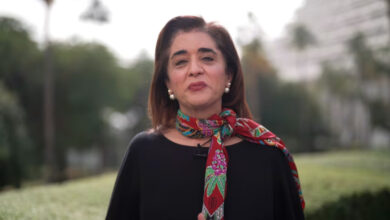
In an effort to boost renewable energy in Egypt and establish Egypt as a leading player in environmental development, the Ministry of Electricity and Renewable Energy initiated a LE 5 billion project to build the largest wind farm in the Middle East, locates in the Suez Bay, funding the project through investments of several international entities, reported Al-Ahram Arabic website.
Mohamed al-Khayat, general manager for the Renewable Energy Committee, signed the first agreement to build the wind farm, through funds which will be provided by the European Union (EU), the German Development Bank, and the French Development Agency.
The EU will be providing a €30 million grant in the first phase, out of its total dedicated fund of €115 million. The German Development Bank, meanwhile, will be supporting the project with a €72 million loan. The French Development Agency will be providing a €50 million loan.
Khayat told Ahram Arabic that the wind farm “comes as part of the Electricity and Energy Minsitry’s plan to increase the reliance on renewable energy when producing electricity.” He added that the Suez Bay project is the first of many.
Khayat also explained that the committee established an “atlas” to determine the best places for new projects, by measuring wind speed. The Egyptian climate, he says, makes it an excellent candidate for developing wind power due to its geography.
On another note, the Renewable Energy Committee is conducting negotiations with a number of Egyptian banks to provide a LE 1 billion fund for several solar energy projects under 500 Kilowatt. Rooftop solar energy projects in particular have been focused on, and it is hoped they will encourage citizens to establish solar items on their rooftops to provide for their own electricity needs and sell the remaining electricity to companies.
This all comes as a part of a wider plan to establish Egypt as a major player in renewable energy.
Traditionally, Egypt has depended on oil and gas as a main supply of energy, leading to a lot of problems such as pollution and inefficiency, in addition to the obvious pressing matter that these are non-renewable energy sources. Subsequently, it has put Egypt at a constant risk of running out of energy sources.
Fortunately, Egypt is a strong candidate to become a renewable energy-dependant country since it has an abundance of land, sunny weather, and high wind speeds. More specifically, it has excellent wind on the Suez Gulf with an average wind speed of 10.5 m/sec.
Egypt is also one of just 38 countries in the world with a published National Wind Atlas, according to export.gov, a US Department of Commerce website designed in collaboration with 19 US Government agencies to direct investors to strong investments.
Wind energy is expected to take a central role in providing energy for the country in the near future. According to the Egyptian government official exports website, Egypt intends to supply 20 percent of its generated electricity through renewable energy sources by 2022: with 12 percent from wind, 5.8 from hydro-power, and 2.2 percent from solar energy.
The New & Renewable Energy Authority (NREA) plays a strategic role in the government’s renewable energy plans. It currently has approximately 500 MW of wind power plants in operation and 1,340 MW under implementation and development. It is also expected to contribute substantially to the rapid expansion of wind power capacity.
There are three privately owned independent power producers (IPPs) with total generation capacity of about 2.5 GW, which started operations in 2002-2003 under 20-year long power purchase agreements with EEHC, according to export.gov.
The concept of renewable energy is not a new one in Egypt. In 1986, Egypt’s New & Renewable Energy Authority (NREA) was established to act as the national focal point for expanding efforts to develop and introduce renewable energy technologies on a commercial scale. Since then, a number of governmental organizations have been established to help promote and develop policies facilitating the growth of the renewable energy industry.
The primary sources of such policy are the Ministry of Electricity and Energy (MOEE), which holds a monopoly over the generation of, transmission, and distribution of electricity, along with the Supreme Council for Energy (SCE) – with the latter reporting directly to President Abdel Fattah al-Sisi.
The Egyptian Electric Utility and Consumer Protection Agency (EEUCPA) is the industry watchdog, and it is responsible for licensing and sector monitoring.
Despite all these established institutions, renewable energy never held a priority position that reflects its importance to energy development in Egypt.
The first groups of wind farms in Egypt were built in 2001, totaling approximately 430 MW. They generated 4 Billion KWh of electricity and saved approximately 900,000 T.O.E of fuel.
A beacon of light for the industry appeared as the development of renewable energy took a more central discussion in government conversation and discourse over the 2000s, but the events of 2011 and the subsequent political uncertainty have slowed progress in the renewable energy sector.




